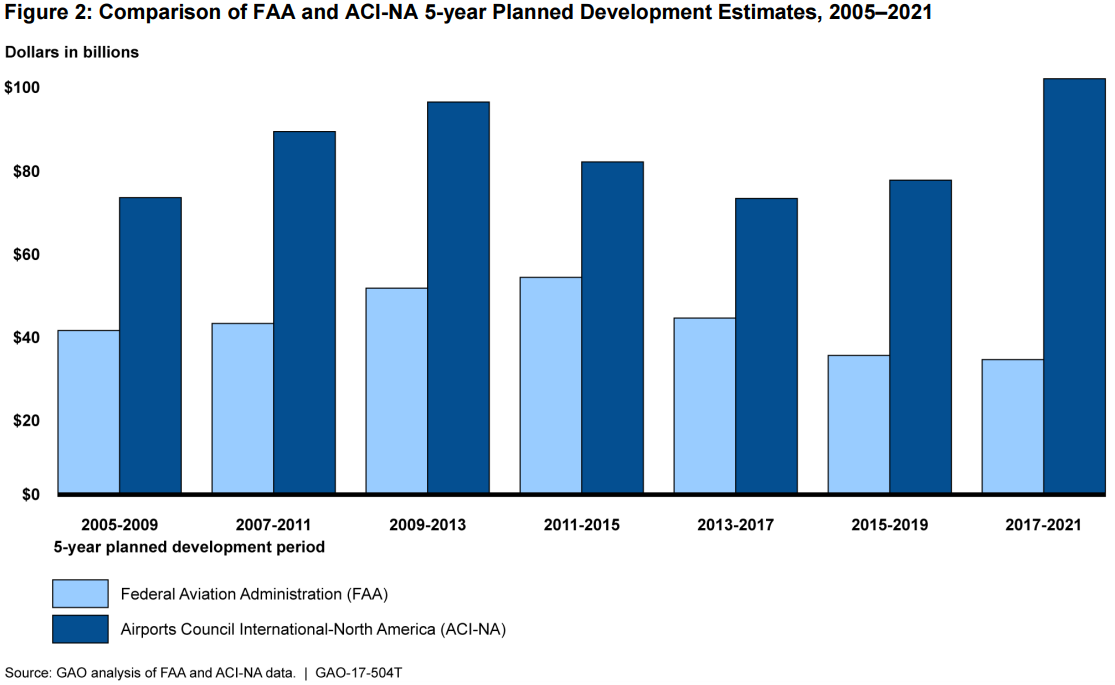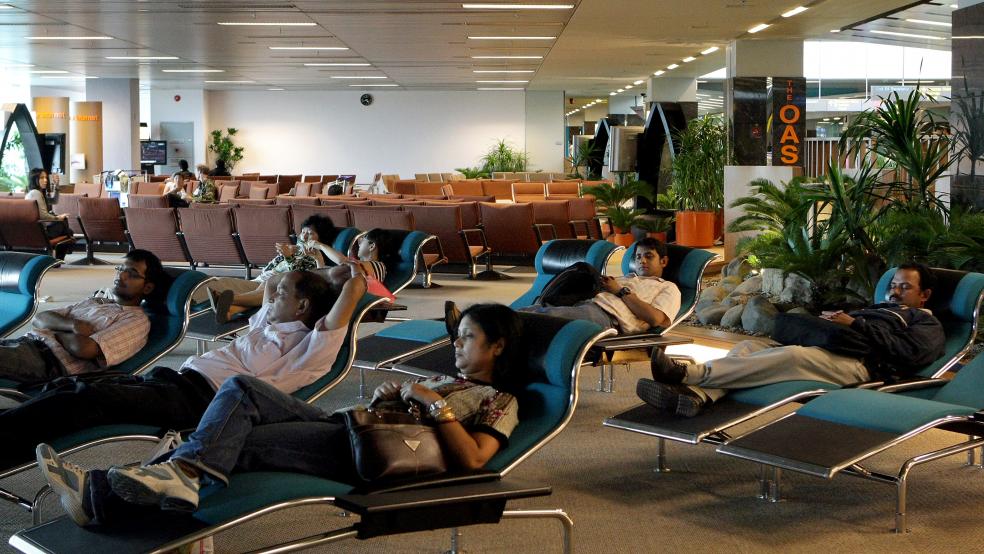When public officials complain about infrastructure in the United States, airports are among their most popular targets. Former vice president Joe Biden memorably compared New York’s LaGuardia Airport to one you would find “in some third-world country.” More recently, then-presidential candidate Donald Trump railed against the condition of the country’s airports, and in his inaugural address promised “gleaming” new facilities across the country.
But for all the agreement about how much work the nation’s airports need, there’s little clarity on just what needs to be done, how much it will cost, and where the money is going to come from.
Related: Trump's Trillion Dollar Infrastructure Plan Could Be DOA
Testimony delivered before a Senate subcommittee on Thursday by Gerald L. Dillingham, the Director of Physical Infrastructure Issues for the Government Accountability Office, claims there is a vast gap between what the Federal Aviation Administration considers necessary spending at the nation’s airports and what the industry’s trade group says is needed. The FAA says that over the next five years, airports will require about $32.5 billion in infrastructure development spending. However, the Airports Council International-North America (ACI-NA) says the number is closer to $100 billion.
The GAO says the gap is largely due how the FAA considers infrastructure projects: It only looks at those eligible for funding through the federal government’s Airport Improvement Program, a grant system that is part of the larger Airport and Airway Trust Fund, which gets its money from various taxes on the airline industry.

The primary difference between projects that are eligible for AIP funding and those that aren’t is in their ultimate purpose. The AIP money is typically spent on elements of a facility that are essential to the physical arrival and departure of airplanes and passengers. That includes land acquisition, building new runways, and construction of roadways and other systems for moving people through the airport.
What the AIP does not fund, though, are many of the things that, to the average passenger, have a lot to do with whether they feel as though they are in a “gleaming” modern facility, or in Biden’s “third-world” airport. That’s everything else that generates revenue for airports and commercial enterprises, from ticket counters to retail space.
Related: Rural State Republicans Challenge Trump’s Infrastructure Spending Plan
One possibility for generating additional funds that could be used for other improvements would be to raise or eliminate the cap on what’s known as the Passenger Facility Charge -- a $4.50 per-leg fee that is added to every passenger’s ticket, up to a maximum of $18 for a round-trip purchase.
Dillingham says, “In 2015, GAO estimated that funding from these sources totaled an average of $10.3 billion annually (2013 dollars), $2.7 billion less than airports’ planned development costs.”
However, raising or eliminating the PFC cap is controversial, not least of all with the airlines that worry that increasing the costs borne by passengers will result in an overall reduction in business. Indeed, the GAO’s analysis determined that, depending on how price-sensitive consumers are, a PFC increase could impact the growth rate of airlines’ businesses.
Related: Trump Again Calls for Rebuilding US Infrastructure in Inaugural Address
However, the testimony appeared to come down primarily on the side of recommending increased PFC as a means of funding airport improvements. “[H]igher PFCs can provide airports more control over local capital funding decisions, including the ability to decide how to apply PFC revenues to support capital projects and thus how those revenues might influence airline rates and charges.”
“Generally, PFCs offer airports relative independence over investment decisions at their airports. While airports must notify and consult with the airlines on how they spend PFCs, airlines cannot block these decisions if the FAA approves. Airlines can choose to serve other airports, however, so airports still have an incentive to listen to airline concerns.”





